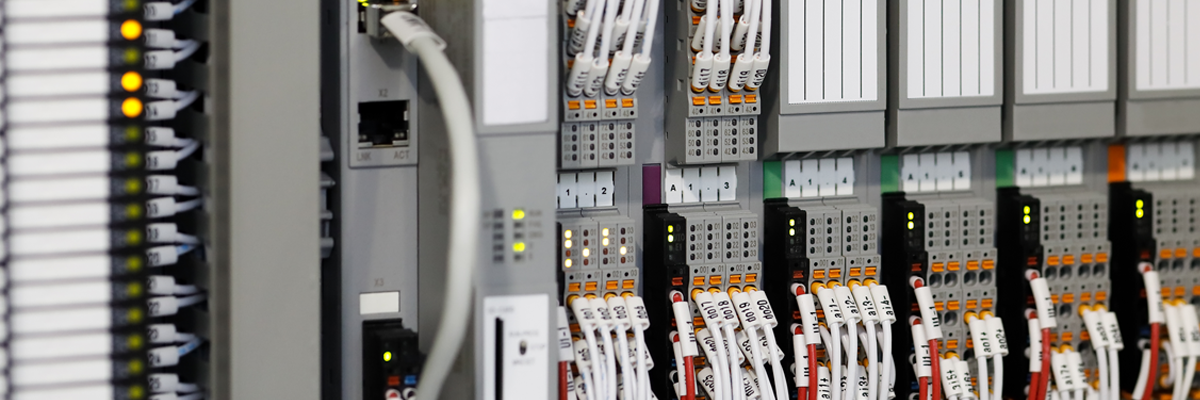
What is a Programmable Logic Controller (PLC)?
In today’s fast-paced industrial landscape, efficiency, precision, and reliability are non-negotiable. That’s where Programmable Logic Controllers (PLCs) come in. These rugged, industrial-grade computers are the brains behind countless automated processes, helping businesses streamline operations, reduce downtime, and maintain consistent product quality.
Whether you're running a manufacturing line, managing facility systems, or overseeing complex machinery, understanding how PLCs work can help you make smarter decisions about automation and control. In this post, we’ll break down what a PLC is, how it works, its benefits, and common applications.
Why You Can Trust Crescent Electric
Backed by over 100 years of service, we take pride in helping industrial businesses make the most of industrial automation. We partner with leading suppliers to offer a comprehensive range of industrial supplies and technologies, including PLCs. Our team of Application Engineers can help you find the right automation solutions for your business and implement them smoothly. Our team is experienced, knowledgeable, and excited to work with you!
Whether you’re looking for more information about industrial automation or are ready to get started, reach out to our Application Engineers today and get on the path to transforming your business.
What Is a PLC?
A Programmable Logic Controller (PLC) is a small, ruggedized computer that’s used for industrial automation.
PLCs have played a major role in industrial processes for decades, as the first PLC was developed in the late 1960s. Like most technology, PLCs have become smaller and more powerful over time. Modern PLCs can be seamlessly integrated into industrial control systems such as SCADA, which allows operators to analyze data and make important decisions quickly from anywhere in the world.
Key Components of PLCs
Before we look at how a PLC works, it’s important to understand a few components of PLCs. We’ll explore how these components function together later.
Central Processing Unit (CPU): All computers and electronic devices have a CPU, sometimes referred to as a processor. The CPU is the “brain” of a PLC; it stores and processes program data and transmits I/O data, among many other things.
Input/Output (I/O): I/O modules are how PLCs collect data and interact with external devices. The most common forms of PLC I/O are discrete I/O (true or false, like a light switch) and analog I/O (wider range of signals, like a light dimmer).
Power Supply: The power supply provides the electrical power needed to run the PLC.
Communication Interface: Modern industrial systems feature numerous components that need to communicate with one another. PLCs often need to communicate with other PLCs, Human-Machine Interfaces (HMIs), SCADA systems, and more. This is done through industrial protocols such as Ethernet/IP, Modbus TCP/RTU, and PROFIBUS.
Programming Device: PLCs operate using control instructions (referred to as logic). Programming devices are used to write, test, and load the logic. Programs are often written in Ladder Logic or C programming language.
How PLCs Work
The PLC operation cycle is broken down into three stages. The entire cycle happens in just milliseconds.
Input Scan
Because I/O is how a PLC interfaces with the world around it, the first step in the process is reading the status of connected input devices. Inputs may include sensors, switches, or meters. Depending on the type of input, the PLC will determine whether data inputs are in an open or closed state (discrete) or what the value is (analog).
Program Execution
With the input data collected, the PLC can run the user-created logic. The PLC processes the logic line-by-line and uses the input values to determine how outputs should respond.
Output Update
The PLC completes the cycle by sending voltage or current signals to output devices such as relays, valves, or drives. These signals tell the device to perform a physical action, such as opening or closing a valve or adjusting the speed of a motor.
Common PLC Applications
PLCs started in the automotive industry, but they have become widely utilized across many industries. A few common applications include:
Manufacturing: PLCs are the backbone of automated production lines. They’re used for managing assembly sequences, coordinating conveyor belts, and much more.
Water and Wastewater Treatment: Thanks to their reliability and speed, PLCs play an important role in the operational efficiency and compliance of water treatment plants.
Energy and Utility Systems: Utility providers use PLCs for real-time monitoring and automated control of energy distribution.
Commercial Building Automation: While PLCs are mostly commonly used in industrial applications, they can also be used for building automation processes such as HVAC control, lighting management, and more.
Benefits of PLCs
Whether used as a standalone industrial control system or as part of a more advanced system, PLCs offer a variety of benefits for industrial businesses.
Reliability
In thinking back to the definition of a PLC, the word “ruggedized” shouldn’t be overlooked. Given that they are designed for use in industrial environments, PLCs are built to withstand harsh conditions such as high vibration and high temperatures.
Precision and Speed
PLC cycles take only milliseconds to complete, which allows them to instantly respond to changing inputs. Because of this, PLCs ensure precision, speed, and consistency where it matters most—such as high-speed machinery or time-sensitive controls.
Integration with Modern Systems
Industry 4.0 is changing the way industrial businesses operate. As equipment becomes increasingly connected, modern PLCs are designed to easily communicate with other industrial control system components.
Cost-Effectiveness
PLCs often have a high initial investment, but they are a cost-effective solution in the long run thanks to their reliability and maintainability.
Final Thoughts
From their inception over 50 years ago until now, PLCs have played an increasingly critical role in industrial operations. Given the highly automated and connected nature of today’s industrial landscape, PLCs are essential tools for businesses looking to optimize their processes and stay competitive.
If you’re considering implementing PLC-based control or upgrading legacy systems, our team of Application Engineers can help. Reach out today to get on the path to enhancing your operations!